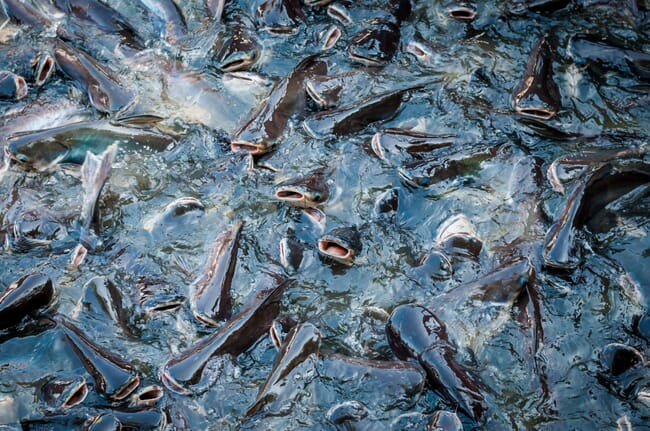
So claims a team of researchers from Kindai University's Aquaculture Research Institute, in Japan. Rather than hormone treatment they used isoflavone – a compound found in soybeans – to create the all-female groups of catfish, in the first project of its kind in Japan.
According to the project’s team leader, Professor Toshinao Ineno, females reach market size, of 600 g, 6-10 months after hatching. Males, which grow more slowly, are often discarded by fish farmers.
“By making them all-female, production efficiency will rise," the project’s team leader Prof Ineno, is quoted as saying in The Mainichi. "This can be applied to other farm-raised fish whose females are more valuable."
While researchers have long known that administering female hormone turns male catfish into females, this isn’t permitted for fish destined for human consumption. However, Prof Ineno considered using soybean isoflavone, which is sold commercially as a dietary supplement.
The experiment was conducted with catfish divided into five different tanks; one of regular fish farming water; three with different concentrations of "genistein," a chemical component of soybean isoflavone; and one with female hormone dissolved in the water. The team kept 150 fry in each tank for 15 days, before transferring them to ordinary water until they were 150 days old.
While 68 percent of catfish in the ordinary water were female, 96 percent of those kept in the water with genistein at a concentration of 100 micrograms per litre were female. A concentration of 400 micrograms per litre produced an all-female group, the same as in the female hormone-treated group.
Despite the breakthrough there may be some way to go before all-female catfish are available commercially, as using extracted genistein is prohibited in fish faming.
However, Prof Ineno is keen to look into ways for soybean isoflavone to be ingested via the catfish food, for example with feed ingredients such as soy lees.
He is also interested in trialling the use of soybean isoflavone to generate all-female sturgeons.


